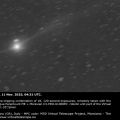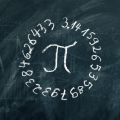Principe de Hardy-Weinberg - Définition
La liste des auteurs de cet article est disponible ici.
Généralisations
Généralisation en cas de polyploïdie
Généralisation complète
Histoire
La génétique mendélienne a été redécouverte en 1900. Cependant, elle est restée plutôt sujet à controverses durant de nombreuses années et l'on ignorait alors de quelle manière elle pouvait déterminer des caractères continus. Udny Yule (1902) a critiqué le mendélisme car il pensait que les allèles dominants augmenteraient dans la population. L'américain William E. Castle (1903) a montré que sans sélection, les fréquences de génotypes resteraient stables. Karl Pearson (1903) découvrit une position d'équilibre avec des valeurs de p = q = 0,5. Reginald Punnett, incapable de rétorquer au point de vue de Yule, soumit le problème à G. H. Hardy, un mathématicien britannique, avec qui il jouait au cricket. Hardy était spécialisé en mathématiques pures et méprisait quelque peu les mathématiques appliquées ; son regard sur la façon dont les biologistes recouraient aux mathématiques est révélé dans un article de 1908 où il décrit cela comme « very simple ».
Citation (en anglais)
- To the Editor of Science: I am reluctant to intrude in a discussion concerning matters of which I have no expert knowledge, and I should have expected the very simple point which I wish to make to have been familiar to biologists. However, some remarks of Mr. Udny Yule, to which Mr. R. C. Punnett has called my attention, suggest that it may still be worth making...
- Suppose that Aa is a pair of Mendelian characters, A being dominant, and that in any given generation the number of pure dominants (AA), heterozygotes (Aa), and pure recessives (aa) are as p:2q:r. Finally, suppose that the numbers are fairly large, so that mating may be regarded as random, that the sexes are evenly distributed among the three varieties, and that all are equally fertile. A little mathematics of the multiplication-table type is enough to show that in the next generation the numbers will be as (p+q)^2:2(p+q)(q+r):(q+r)^2, or as p1:2q1:r1, say.
- The interesting question is — in what circumstances will this distribution be the same as that in the generation before? It is easy to see that the condition for this is q^2 = pr. And since q_1^2 = p_1r_1, whatever the values of p, q, and r may be, the distribution will in any case continue unchanged after the second generation
Fin de citation
Le principe était donc connu comme Hardy's law (loi de Hardy) chez les anglophones jusqu'à ce que Curt Stern (1943) ne démontre qu'il avait déjà été formulé une première fois de façon indépendante en 1908 par le physicien allemand Wilhelm Weinberg (voir Crow 1999). D'autres ont essayé d'y associer le nom de Castle à cause de ses travaux en 1903, mais il est rare que l'on évoque la loi de Castle-Hardy-Weinberg.

















































